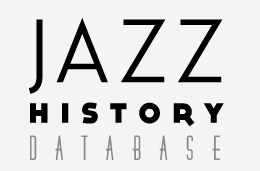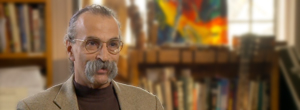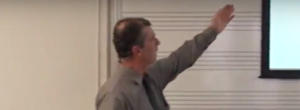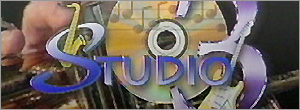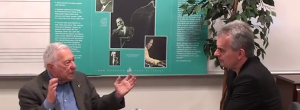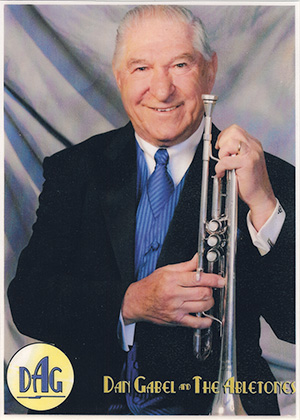
B: March 16, 1926 – Worcester, MA
Instrument: Trumpet
Hailing from the swing and dance band era, local jazz musician Anthony “Tony” D’Angelo fell in love with jazz at an early age. Born in 1926 in Worcester, Tony came from a musical family. His ear was accustomed to the smooth rhythms played by his father on the guitar and mandolin. Both born in Italy, Tony’s parents, Gioachino D’Angelo and Annina Forcucci, loved to entertain at the family home. Tony was one of ten brothers and sisters, all of whom were in some way musically-inclined. Some of his fondest memories about his start in jazz come from family parties, with Tony cranking the Victrola and listening to the sweet sounds of Benny Goodman and Arty Shaw. Tony’s older brother turned him on to the trumpet, and at the age of 11, Tony received a Conn-Ed trumpet from Kinney’s music store on downtown Main Street. Within six months, his brother bought him a brand new Conn-22B, a very expensive horn for the day.
As Tony says, “The horn doesn’t make the musician, the musician makes the horn.” However, this new trumpet continued to fuel Tony’s passion for playing. He began receiving lessons from a talented Italian clarinetist and instructor, Tantamonaco. After this, Tony received three weeks of lessons from another instructor, Ernie Reahpell. However, Tony moved on, as his heart was with the style of Don Fagerquist, one that the instructor could not teach.
At only 15 years old, Tony began playing combos with the Mercandanti’s, and Johnny Marolla. He was invited to play lead trumpet with Al Shavour’s Classic Swing Band. This was a full band, and Tony was playing lead trumpet, a position which he stayed in for a year. Al Shavour was also a talented youngster at this time, being only a year or two older than Tony. Although he didn’t learn as much as he would have liked from his instructors, Tony quickly picked up the rules of the game; if the lead chair decided he was going to interpret a rhythm, it was up to the other trumpets to follow his lead. They played mostly stock arrangements, but they were written simply so the individual sections could interpret the notes and put their own style on the music; Tony used his ear and followed the others.
During Tony’s career at Commerce High School, there were two musical instructors: Mr. Wilson and Mr. Wilson, father and son. The father preferred classic music, while the son was more hip and had a passion for swing and dance. Luckily, Tony had class with the young Mr. Wilson and here he met another great, Jaki Byard. Although Byard played with a beat-up old horn that “even the Salvation Army wouldn’t take,” Tony idolized his style and the grace of his playing. This is when he first learned to surround himself with great musicians. Other greats from his high school included Barbara Coppersmith, Barbara Carol, and Charlie Martino.
After three years in high school, Tony went to work. With both of his brothers in the service in World War II, Tony used the money he made from working days and playing nights to help support his family. During a show by the Chick Eddy Band at the Rosalyn Ballroom, Tony received a very lucky opportunity. He was glancing at the music on the second trumpet player’s stand, when the leader of the band, Boots Mussulli, walked over. It so happened that the second trumpet player was going into the service, and Boots need another one. Tony came down for a rehearsal, and he got the gig, at only 16 years old. He stayed with Boots’s band for almost two years, until he turned 18 and was drafted into the service.
During his time in the service, he didn’t play his trumpet at all, until he sent for it to be shipped overseas to him. He signed up as the bugler, and got the added bonus of skipping the chow lines. Upon his return from the service, Tony started playing combo work in Trumble Square, Worcester. He would play with Dick Gay and Eddy Dalber at Logan’s Café. Although his loyalty lay with the dance band music, he wrote for his combo group. At this time, he heard about Tony Ferris forming his own band. Ferris was hailed as “The Arty Shaw of New England.” Tony did an audition with Ferris, which consisted of him improvising a solo with a drummer, and he got the gig. Tony stayed with Ferris for a couple of years, and then started an experimental “rehearsal” band of his own. He spent some time arranging for this band and they performed a few jobs. His next endeavor was with the Tony Zano band, and after that Freddy Halumbia’s rehearsal band. He would play at the Holden Hills society gigs with a full band, and the money was good. Not one for staying with any group for too long, Tony moved on to the Bob Iscernio big band, playing with Ed Imu. Tony and Ed had a mutual respect for each other; they both had their own talents. Tony could hit the high notes, but Imu played some rhythms beautifully.
During his long career, Tony D’Angelo has played all around New England and with a multitude of different bands, contributing his style and skill to each one of them.
Currently, Tony still fills in for the Dan Gabel band. He stills plays with the young musicians and keeps up. He is thankful for still being able to do what he loves after more than 70 years of playing trumpet.
Primary Source:
Interview conducted by Richard Falco with Anthony D’Angelo: Jan. 22, 2013.
Source:
Francis Raymond D’Angelo, Sr. Obituary. Worcester Telegram & Gazette. January 22, 2013.
